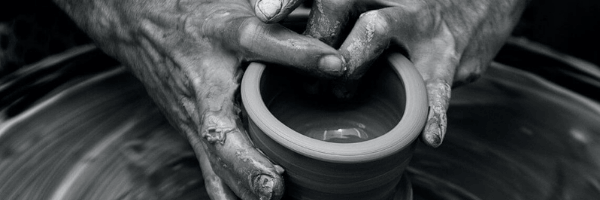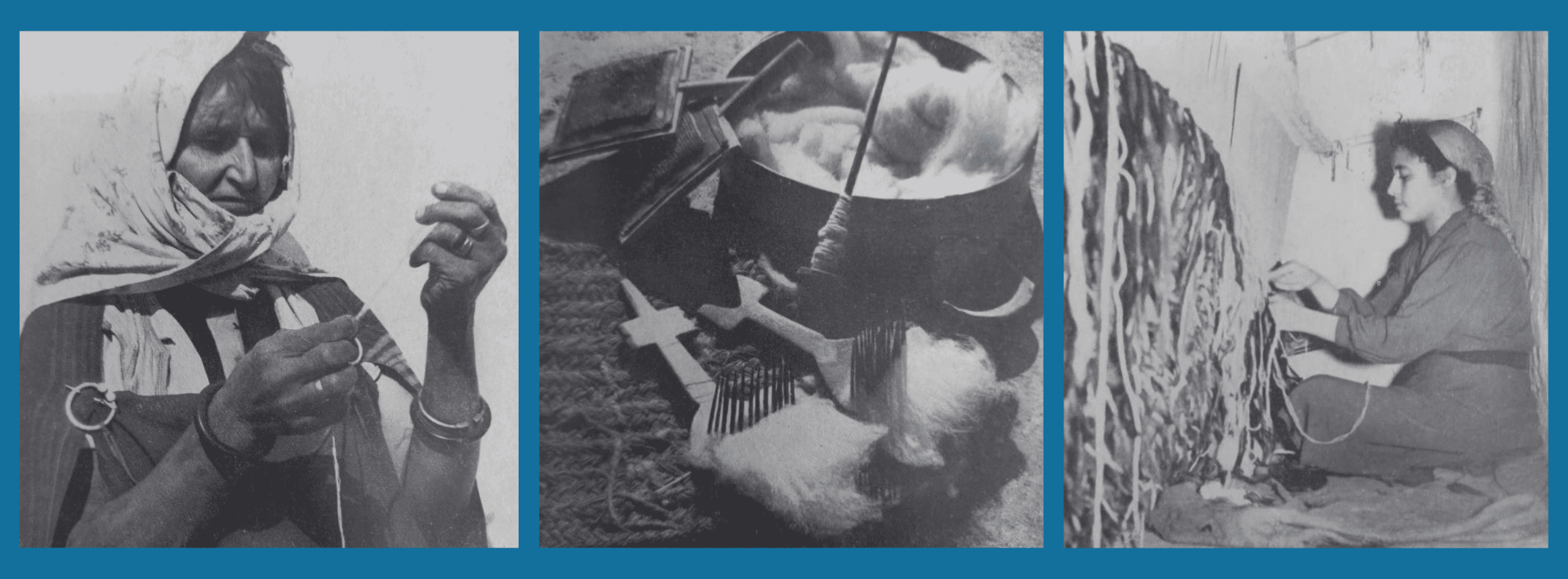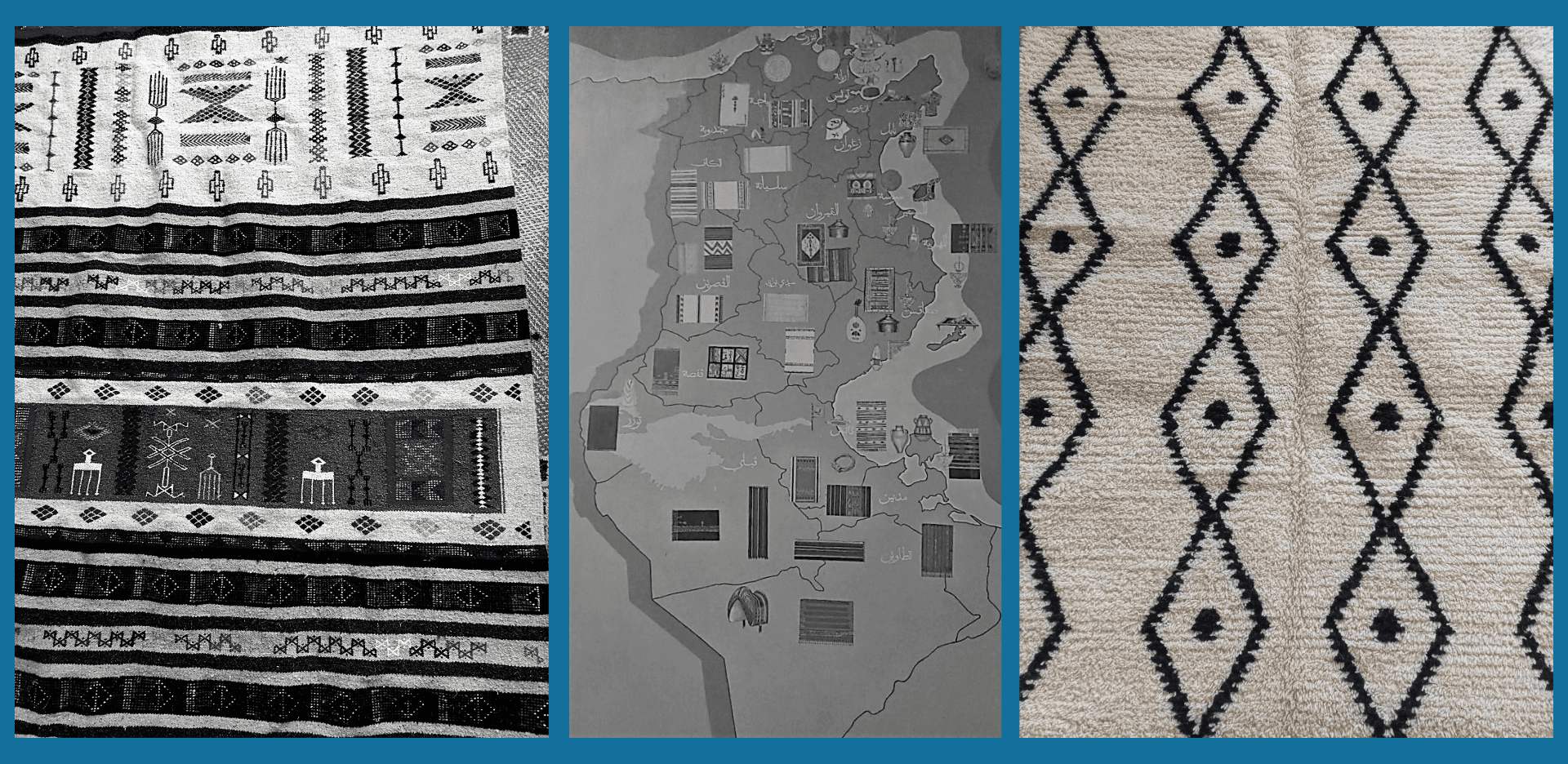
In Tunisia the most original woven materials are made by bedouins who, owing to the use of very primitive looms, make the most beautiful and the strongest rugs and blankets, such as “heml(s)” which are made up of narrow strips sewn lengthwise to each other, and which serve as rugs, blankets or, as the Arabic name suggests, as sacks for carrying linen and clothes during nomadic periods.
As for wood, it supplies houses with furniture (chests and shelves), ceilings and doors, in addition to funnels, bowls and pans which are carved out of wood in the south of Tunisia. Through the action of the potter’s hands on clay, amphorae, jars and jugs rise into shape as if by magic, and in the hands of the skilful craftsman, metals are pliable at will and are turned into objects of adornment, jewels, sometimes further brightened with a sprinkle of corals and enamels.

Matter is therefore directly apprehended by man without any intermediary whatsoever. He touches, manipulates, kneads, cuts, molds it, and thus indelibly marks it with his own imprint. The gesture of the craftsman is, as we have seen, immutable, codified and organized into an exclusive system,but the generating gesture responds that of the user, contemporaneous with it, for there is hardly any gap between creation and consumption.
Particularly in rural areas, communities lived in a kind of autarky which induced the members of the group to make the objects which they needed: the women wove their own clothes, carpets and blankets, as well as those of their neighbors. Contrasting with this domestic, subsistence craftsmanship, involving less rudimentary techniques and based on a customary code within the framework of specialized corporations

